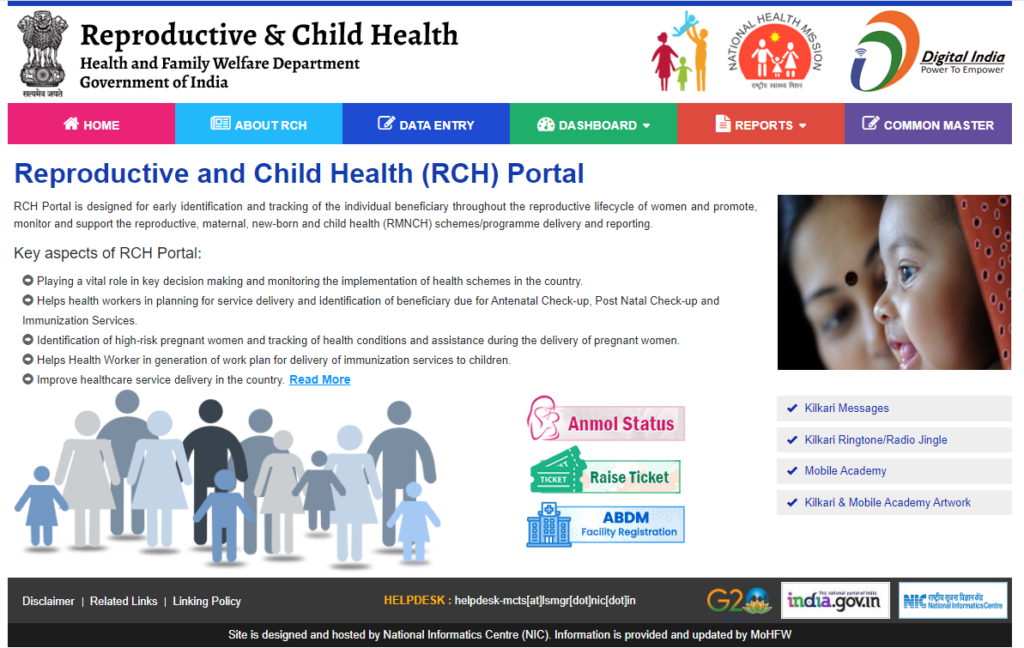Reproductive and Child Health Care (RCH): Definition, Goal, Objectives

Reproductive and Child Health Care (RCH): According to World Health Organisation (WHO), reproductive health means total wellbeing in all aspects of reproduction- its emotional, behavioral, and social aspects along with the physical ones. Therefore, a society with people having physically and functionally normal reproductive organs and normal emotional and behavioral interactions amongst them in all sex-related aspects might be called a reproductively healthy society.
Of all the social goals of India, an important one is to attain total reproductive health. India was amongst the first few countries in the world to initiate action plans and programs at a national level to improve reproductive health. All these improved programs cover wider areas related to reproduction. These programs are currently in operation under the Reproductive and Child Health Care (RCH) programs.
Reproductive and Child Health Care (RCH) : Defination, Goal, Objectives
RCH stands for Reproductive and Child Health. It is a program launched in October 1997 to reduce the death rates of mothers, infants, and children. Reproductive health means that people can have a safe and fulfilling sex life, can reproduce if they choose, and have the freedom to decide if, when, and how often to have children. The RCH portal collects information on all services related to reproductive and child health, including family planning, maternal health, child health, and immunizations.
What is RCH (Reproductive and Child Health Care)
RCH is an acronym for Reproductive and Child Health. It is a program that aims at combating and reducing the mortality rates of mothers, infants, and children and was launched in October 1997.
Objectives / Goals of RCH Programmes
- To create awareness among people about various aspects related to reproduction.
- To provide the facilities to people to understand and build up reproductive health.
- To provide support for building up a reproductively healthy society.
- To bring about a change mainly in three critical health indicators i.e. reducing total infertility rate, infant mortality rate, and maternal mortality rate.
How we can achieve the goals of the RCH Programme
The goals of RCH can be achieved in the following ways:
- By the introduction of sex education in schools. Schools should be encouraged to provide correct information to the young to discourage children from believing in myths and clear the misconceptions about sex-related aspects. Proper information about safe and hygenic sexual practices, sexually transmitted diseases (STD, AIDS), problems related to adolescence, and proper information about reproductive organs.
- With the help of audio-visual and print media, government and non-government organizations should take various steps to create awareness about various aspects related to reproduction.
- By educating the younger generation about birth control measures, prenatal care of the pregnant woman, and post-natal care of the mother and child, the importance of breastfeeding.
- By developing awareness about problems arising due to uncontrolled population growth, social evils like sex abuse and sex-related crimes and take up necessary steps to prevent them.
- By creating awareness about a statutory ban on amniocentesis for sex determination.
- By creating awareness about child immunization programs.
- By educating couples to reduce the mortality rate of newborns and maternal mortality rate.
The population in India which was approximately 350 million at the time of independence, reached close to a billion mark by 2000 and crossed 1.2 billion in May 2011. Now in 2020 population of India has crossed 1.35 billion. The government is taking serious measures to check this population growth. The most important step to overcome this problem is to motivate society to have smaller families by using various birth control methods.
